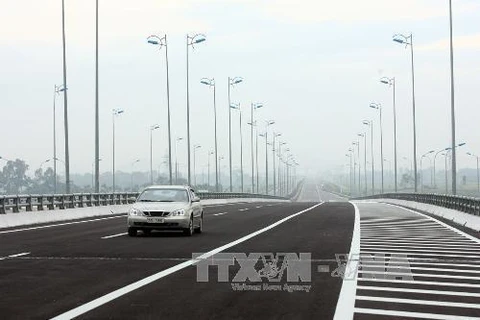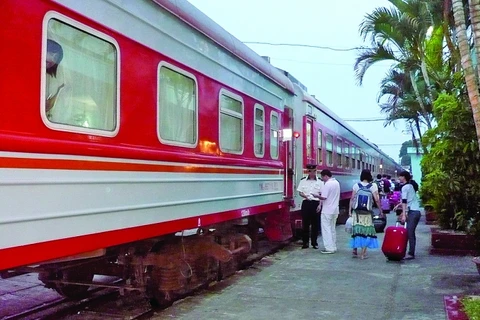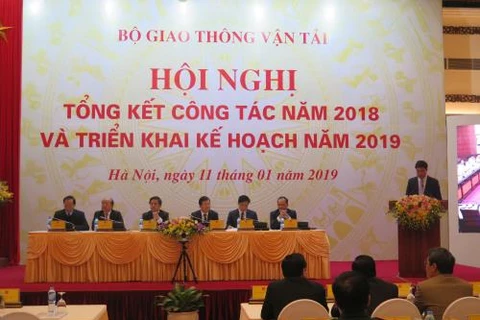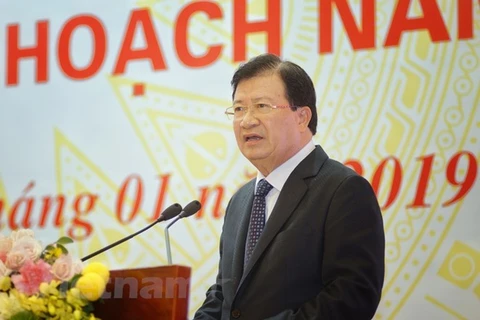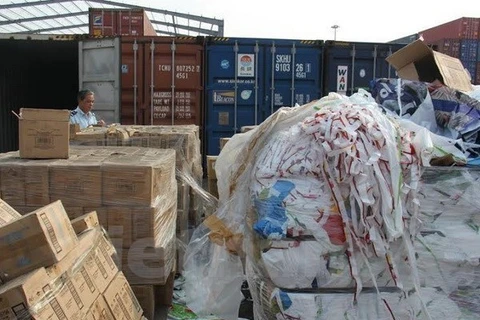Hanoi (VNA) – The Vietnam Railways (VNR) is aiming for 8 percent growth for 2019, with a revenue rise of at least seven percent despite the fierce competition of low-cost airlines and a wide network of highway.
Change in mindset
At a conference held on January 12 to review the firm’s 2018 operation and set tasks for 2019, a representative of the VNR said that in 2018, total revenue of VNR and its subsidiaries exceeded 8.36 trillion VND, up 6.7 percent year on year. The parent company posted revenue of more than 2.63 trillion VND, with after-tax profit of 124 billion VND.
Vu Anh Minh, Chairman of the Board of Members of the VNR attributed the results to the efficiency of the Railway Law 2017 and related legal documents, which created a favourable legal corridor and removed obstacles for the sector’s development.
“The VNR has reformed to improve its service quality, while building new vehicles. The sector has made a big change in its way of thinking, when it has no longer focused on increasing the number of seats in each train, but concentrated on the number of passengers and transport quality. Development in railway mechanics has contributed to reducing train building costs, while salary for its staff has increased,” said Minh.
In 2019, the VNR will strive to complete all assigned tasks despite many difficulties, stated Minh, adding that 7 trillion VND will be invested in system upgrade. He said he hopes investment procedures will be finalised within this year.
“Although the railway sector experienced sluggishness in 2015-2017 when it reached a bottom, in 2018, it started to recover and grow. We will continue the development trend in 2019,” he said.
According to the VNR leader, the biggest difficulty facing the sector is not capital and mechanisms, but the mindset of insiders.
In order to succeed, VNR will shift its development orientation from the number of passengers to service quality. It will switch investment focus to enhancing transport capacity, and exploiting middle distance trains with high efficiency rather than long-distance ones.
Breakthrough switch in operation model
Deputy Minister of Transport Nguyen Ngoc Dong said that railway transport business has been on the rise after a drop in 2016. Currently, the VNR has resumed its balance and seen positive signals in growth.
“The outcomes of railway transport business in 2018 were commendable, especially in the context of difficulties in locomotives, passenger coaches and infrastructure which have lasted for years. Also, the railway industry has become more self-reliant,” said Dong.
According to the Deputy Transport Minister, in 2018, there were two breakthrough changes favourable for the sector - the enforcement of the revised Railway Law on January 1, 2018, and the transfer of VNR management to the Committee for Management of State Capital at Enterprises, which created many adjustments in operational model of the VNR.
“The transfer has resulted in both opportunities and challenges for the VNR. It helped clarify the relations between the firm and the Committee for Management of State Capital at Enterprises as well as the Ministry of Transport. For example, the cost for maintenance will be managed by the ministry or not. Meanwhile, the Committee for Management of State Capital at Enterprises only manages about 3.8 trillion VND of State capital at the VNR, while railway infrastructure is still controlled by the Transport Ministry,” stated Deputy Minister Dong.
He also mentioned the restructuring of businesses and the whole sector, including the equitisation and the division of management responsibilities in each aspect such as infrastructure, maintenance and business.
Alongside, it is necessary to make clear the relations between the parent company and subsidiaries; and those between infrastructure management agencies and transport businesses should be defined as relations should be “partners”, not “mother-subsidies”, he stated.
Regarding traffic safety, Dong lauded the railway sector for the reduction of accidents, deaths and injuries. However, he pointed out that there are accidents related to neglect, with several officials of the VNR and the Vietnam Railway Authority disciplined.
Traffic safety is a regular task, he said, adding that in 2019, the sector should maintain the deployment of measures to ensure railway safety, with an aim of five percent reduction in traffic accidents.
Dong expressed his hope that in 2019, the VNR will reach its targets, including business growth of eight percent, while refining legal documents, clarifying the role and responsibilities of parties, and effectively using the 2.9 trillion VND investment package for the maintenance of railway infrastructure system as well as the 7 trillion VND package from the reserve capital source of the middle-term public investment for 2016-2020 that was approved by the National Assembly recently.-VNA

